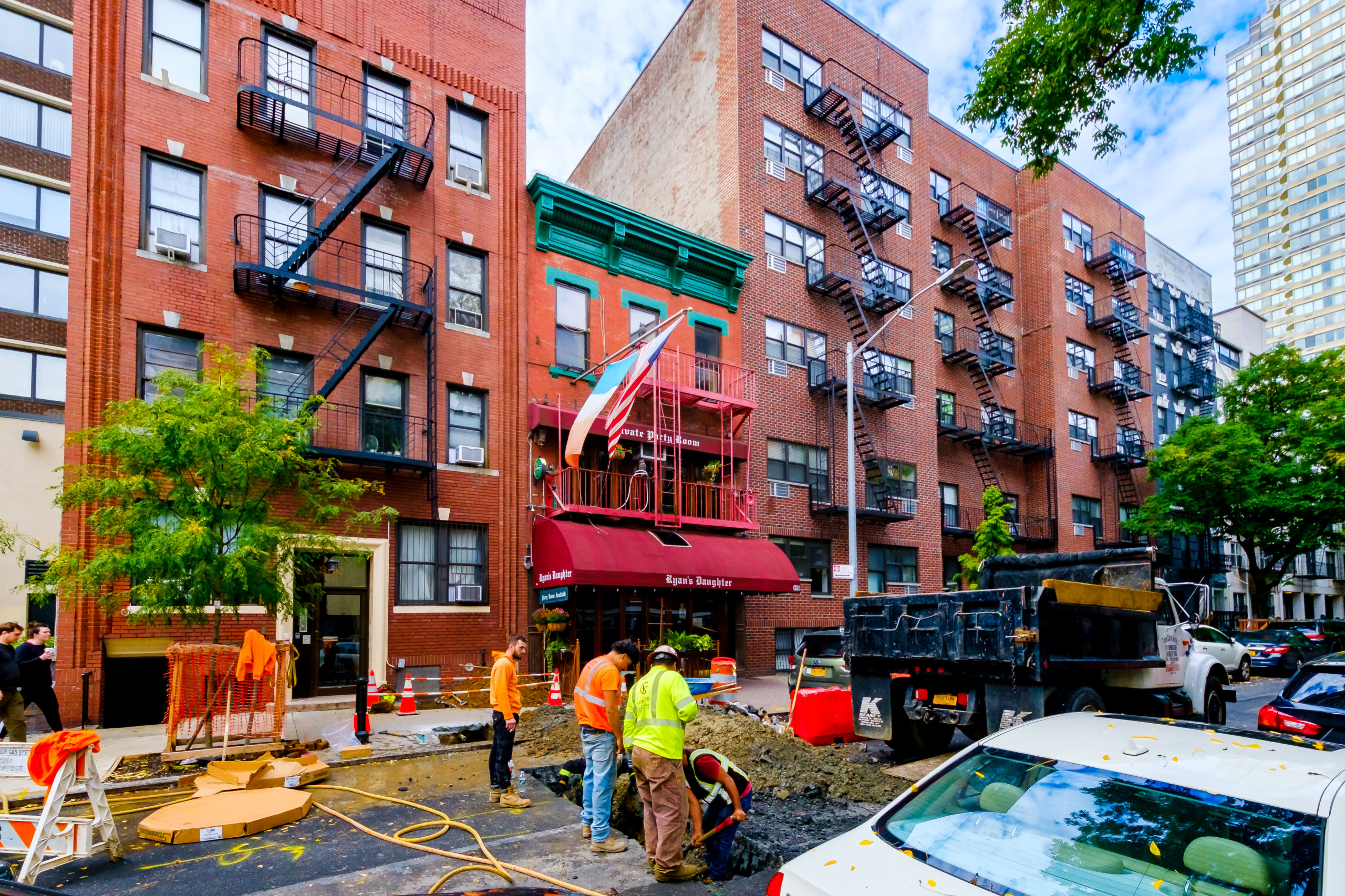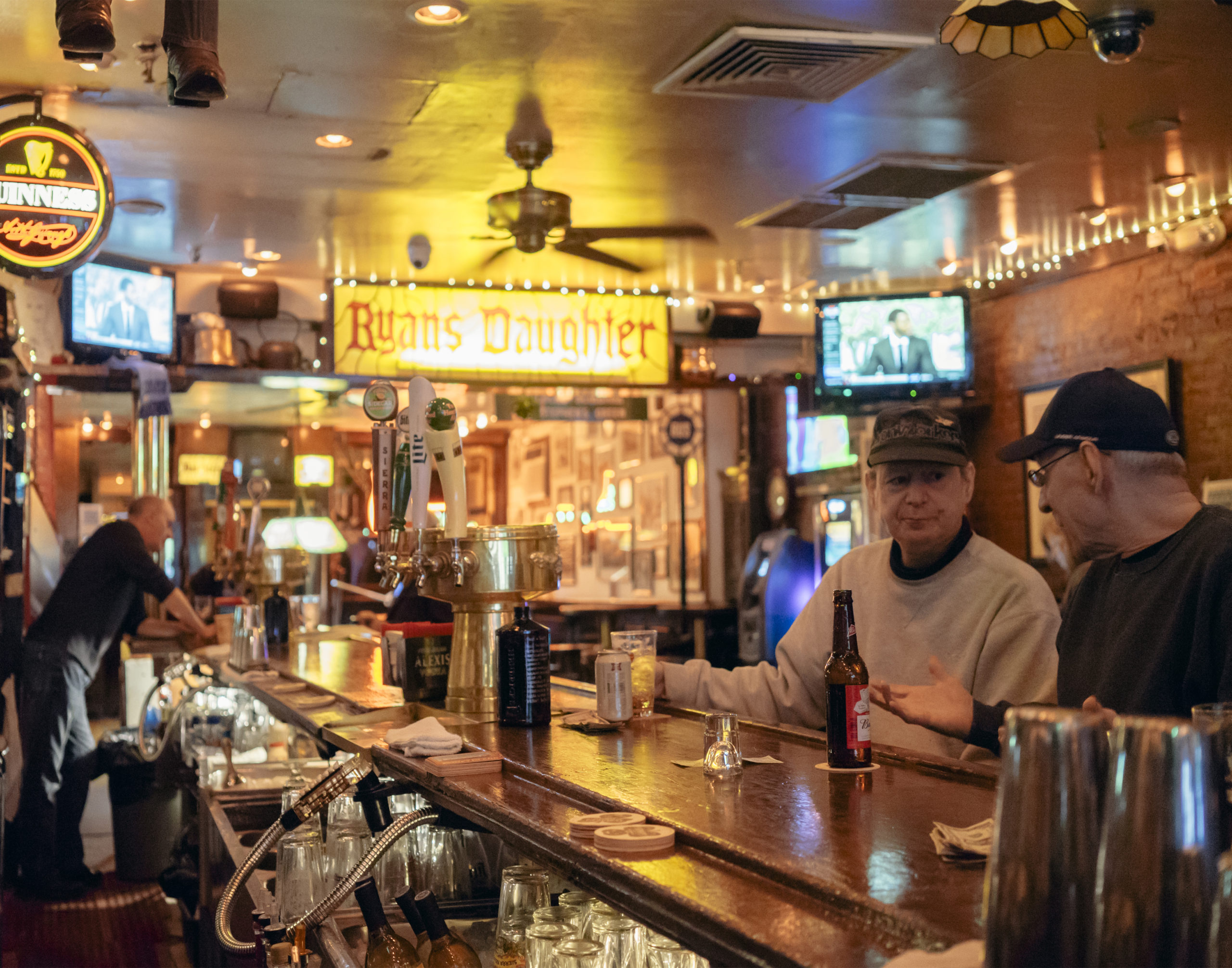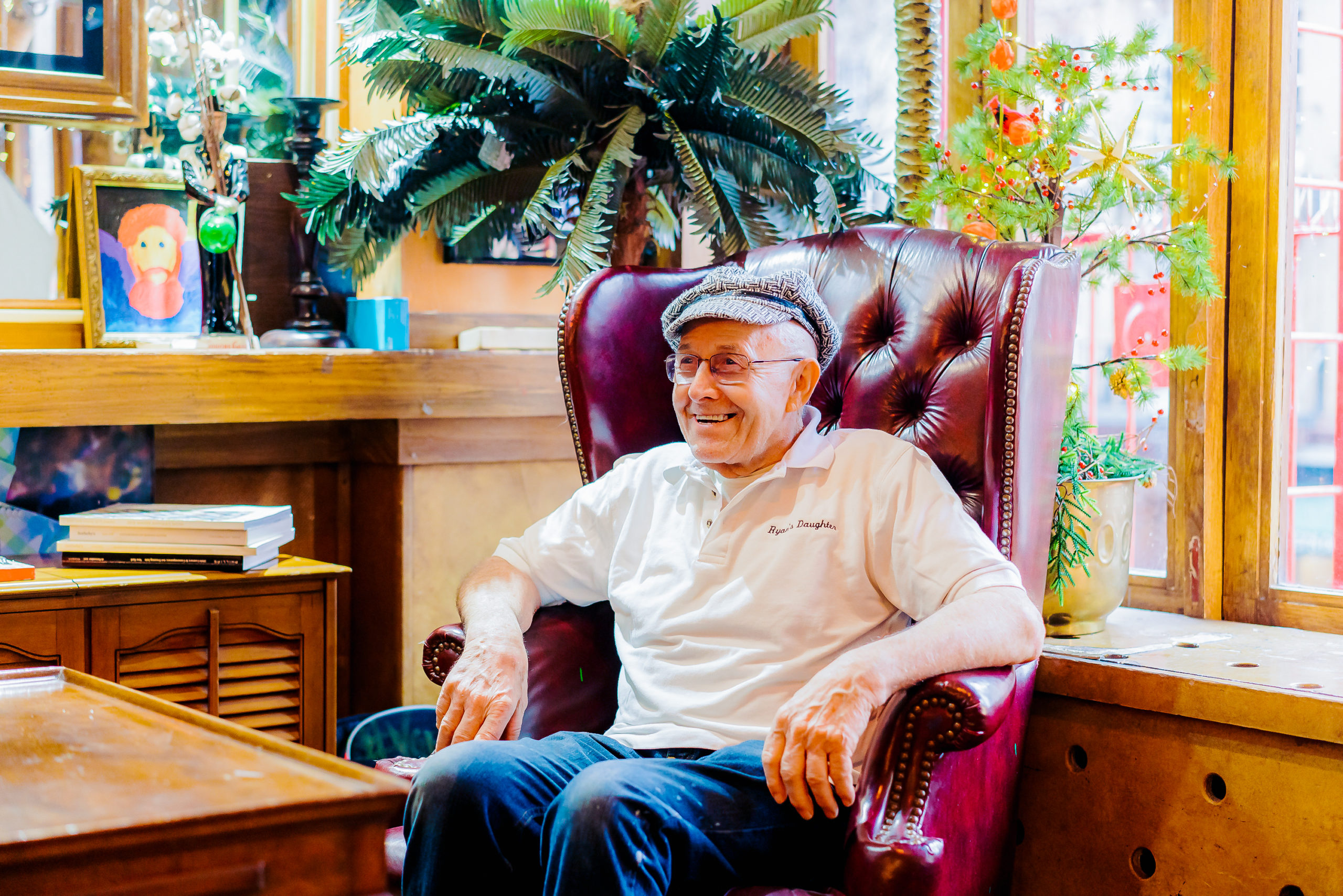Ryan's Daughter 350 East 85th Street 212-628-2613 Established 1979
NOW
A bar has been in this space since the Prohibition era when it was a German club. Although it changed hands over the years, it was Stoney McGurrin who bought the space in 1979, and renamed it Ryan’s Daughter, as a reference to the David Lean film set in Ireland. Stoney arrived in the US as a teen, working odd jobs for years before he was able to take ownership of his own bar.
Jim Gerding began his relationship with Ryan’s first as a customer and then as a bartender before taking it over from Stoney. “There’s something about this place,” Jim reflected. “ In all my years of bartending, it became what I was more and more proud to be a part of.” There was no question that when Stoney offered Ryan’s to Jim, he would accept the challenge.
Stoney, who lives on the third floor, and is in his eighties now, is still deeply involved in Ryan’s and its community. He comes down on a daily basis to do whatever is needed, as no one knows the space better than he.
The bar itself is a fun, two-storied collection of eclectic knick-knacks featuring assorted signs from Ireland— an homage to McGurrin’s heritage. On its cozy upper level, Ryan’s Daughter holds a variety of events, including jazz nights, various play readings, and private parties. In Gerding’s words, “Whether you’ve lived here your whole life or just got here a week ago, either way, this is your extended living room.”
THEN
The 3-story brick building now home to local watering hole Ryan’s Daughter was built in 1882 to designs by John C. Burne, with the storefront likely added sometime in the early 20th century. In the early 1940s the ground floor housed a restaurant and beer garden, and by 1946 it was the headquarters for the Bakery and Confectionery Workers of America union. The original owner, Theodore Cordler, was identified in his 1917 obituary as a retired builder born in Hanover, Germany. Architect John C. Burne designed many small buildings during this era and later became the President of the Manhattan Improvement Company, formed to carry out “extensive uptown apartment-house operations,” a position from which he resigned in 1899.





